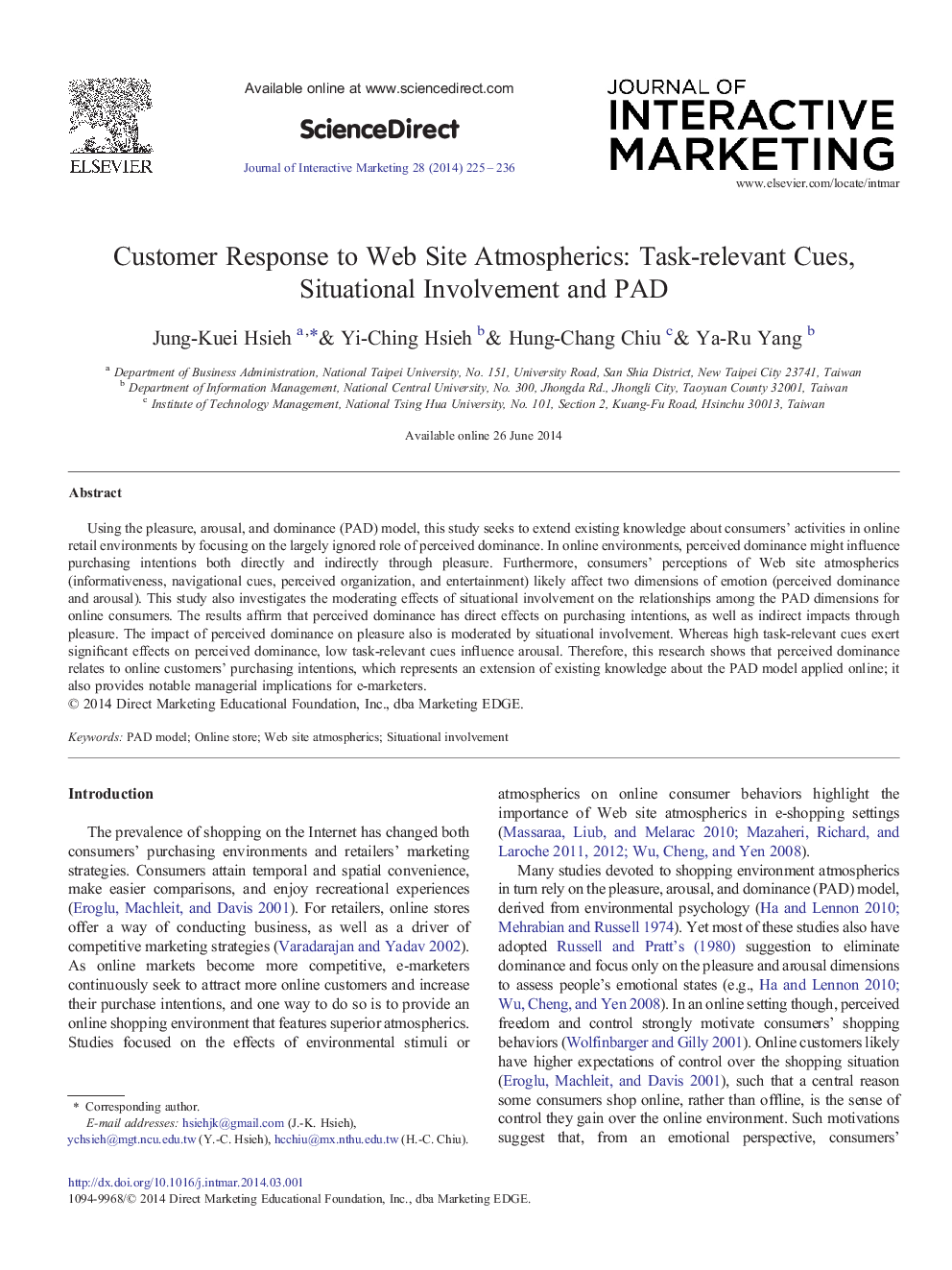| Article ID | Journal | Published Year | Pages | File Type |
|---|---|---|---|---|
| 885997 | Journal of Interactive Marketing | 2014 | 12 Pages |
•We demonstrate that perceived dominance is an important customer's emotion and should not be ignored in online context.•We investigate the moderating effect of situational involvement on the inter-relationships among PAD dimensions.•The results reveal the significant effects of high task-relevant cues on dominance and low task-relevant cues on arousal.•The impact of dominance on pleasure is moderated by the situational involvement.
Using the pleasure, arousal, and dominance (PAD) model, this study seeks to extend existing knowledge about consumers' activities in online retail environments by focusing on the largely ignored role of perceived dominance. In online environments, perceived dominance might influence purchasing intentions both directly and indirectly through pleasure. Furthermore, consumers' perceptions of Web site atmospherics (informativeness, navigational cues, perceived organization, and entertainment) likely affect two dimensions of emotion (perceived dominance and arousal). This study also investigates the moderating effects of situational involvement on the relationships among the PAD dimensions for online consumers. The results affirm that perceived dominance has direct effects on purchasing intentions, as well as indirect impacts through pleasure. The impact of perceived dominance on pleasure also is moderated by situational involvement. Whereas high task-relevant cues exert significant effects on perceived dominance, low task-relevant cues influence arousal. Therefore, this research shows that perceived dominance relates to online customers' purchasing intentions, which represents an extension of existing knowledge about the PAD model applied online; it also provides notable managerial implications for e-marketers.
